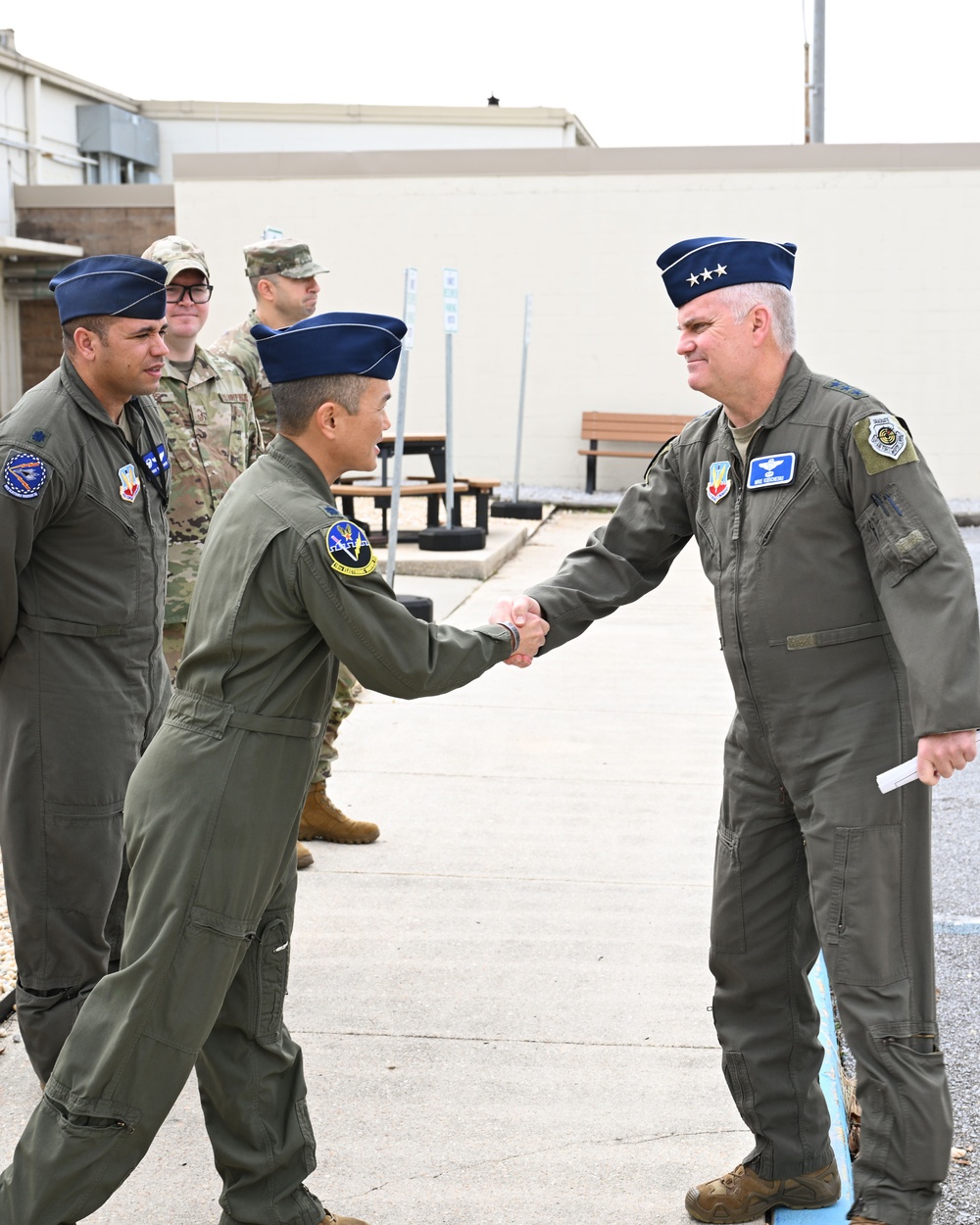DVIDS – News – Oklahoma City, Warner Robins collaborative effort results in industry-wide recognition
By Michael Tackitt
Air Force Sustainment Center
TINKER AIR FORCE BASE, Okla., (Oct. 2, 2024) – A collaborative innovation effort by employees from air logistics complexes at Oklahoma City and Warner Robins is making Nondestructive Testing easier and faster. The team, as well as Cybernet Systems Corporation, has earned the Airlines for America and SAE International 20th Nondestructive Testing Innovation Award.
The Air Force Sustainment Center team members who received this award were: Paul Davidson, WR-ALC, Richard Duin, OC-ALC, and Nick Wandro, OC-ALC.
The project, which started in March 2018 and continued into March of 2020, arose from a need by the 76th Aircraft Maintenance Group at Tinker Air Force Base, Okla., for a more efficient and effective way to track surface inspections.
The purpose of NDT is to evaluate materials, components and systems without damaging them. In the aviation industry, engineers and maintainers rely heavily on NDT during aircraft inspections to ensure an aircraft is safe to operate in its current condition, as well as help engineers determine what repairs, if any, are needed.
The two organizations presented the group the award for the development of a halo-lens-based NDT tracker tool that allows inspectors to perform their work digitally using augmented reality and transcribe their findings in real-time into a computer rather than having to draw out grids by hand and marking their findings manually. This technological achievement has resulted in a 20- to-30 percent decrease in inspection time, resulting in engineers being able to determine the airworthiness of a part significantly faster than before.
“It’s a system that implements an augmented reality and it lays out a virtual grid under the part and it tracks the movement of the ultrasonic transducer [a device that generates ultrasound energy] as you’re taking thickness readings to map the thicknesses at that specific location. Then it produces a graphical representation of that,” said Paul Davidson, a Level III NDI engineering technician at Warner Robins ALC.
This new NDT tracker cuts down the manhours needed for the inspection process, as well as less physical labor that would go into it.
“Traditionally, the way we would do that would be with pencil and paper. You’d have to draw the grid on the aircraft itself,” Davidson said.
Nick Wandro, the NDI program manager for the 76th Aircraft Maintenance Group, explained that inspectors would have to write each reading down using tiny numbers to represent each area inspected, resulting in what could be a drawn-out process for what could be a small area of inspection, so having a new tracker that could transcribe those numbers is a significant timesaver.
“All this used to be done by hand and it was turned in on grid paper, so cost savings was one thing because it did speed up the inspection and made it a little bit easier for the inspectors to collect the data,” Wandro said. “We would usually have two people out there, so one person would be taking the readings and the other would be writing all these little numbers down on grid paper.”
The NDT tracker has also shown other benefits, including less back-and-forth with customers, as well as getting rid of the confusion that comes with trying to read someone’s handwriting.
While this team can take credit for this technology’s current iteration, its origins started when NASA was still operating its space shuttle program. Wandro explained how the team got a hold of it and started working on maximizing its potential.
“From my perspective, it started as a [Small Business Innovation Research] project with NASA a long time ago for the space shuttle external tank, and then they retired the space shuttle, so they were kind of looking for a new home, and Tinker picked it up started working it,” he said. “We used to do a lot of work with pen and paper, so we’d have mechanics out on the floor that were handwriting results, and this system was a digital integration. We would use a camera to track the tools that the inspectors would use and then automatically overlay the results onto a map of the aircraft.”
The NDT tracker is currently in use during inspections at the Oklahoma City ALC, and under evaluation for potential use at Warner Robins ALC.
“We have some potential applications that we’re going to try to use it on,” Davidson said. “We’re still in the early phases here at Robins of implementation of it and looking to see where we can implement it.”
| Date Taken: | 10.16.2024 |
| Date Posted: | 10.16.2024 08:55 |
| Story ID: | 483202 |
| Location: | TINKER AIR FORCE BASE, OKLAHOMA, US |
| Web Views: | 2 |
| Downloads: | 0 |
PUBLIC DOMAIN

This work, Oklahoma City, Warner Robins collaborative effort results in industry-wide recognition, by Michael Tackitt, identified by DVIDS, must comply with the restrictions shown on https://www.dvidshub.net/about/copyright.


 Private Internet Access gives you unparalleled access to thousands
of next-gen servers in over 83 countries and each US state. Your
VPN experience will always be fast, smooth, and reliable.
Private Internet Access gives you unparalleled access to thousands
of next-gen servers in over 83 countries and each US state. Your
VPN experience will always be fast, smooth, and reliable.![DVIDS – Images – UK Space Command Air Commodore Thompson visits S4S [Image 1 of 2] DVIDS – Images – UK Space Command Air Commodore Thompson visits S4S [Image 1 of 2]](https://101veterans.com/wp-content/uploads/2025/02/1740638246_1000w_q95.jpg)
![DVIDS – Images – U.S. SOCOM emphasizes readiness, lethality during NDIA Special Operations Symposium [Image 4 of 6] DVIDS – Images – U.S. SOCOM emphasizes readiness, lethality during NDIA Special Operations Symposium [Image 4 of 6]](https://101veterans.com/wp-content/uploads/2025/02/1740594994_1000w_q95.jpg)
